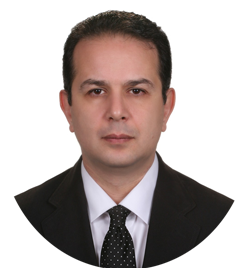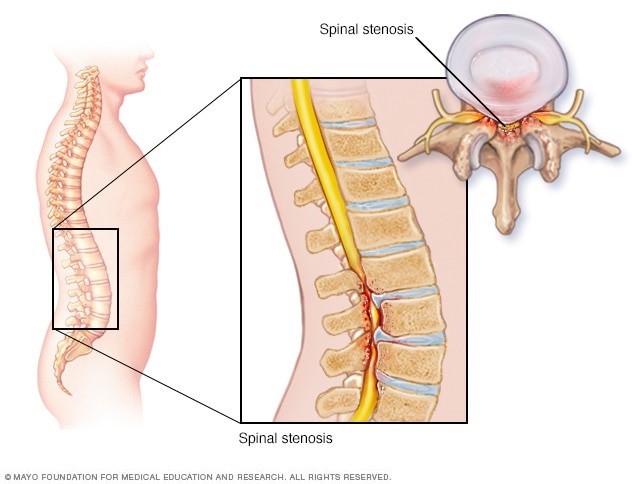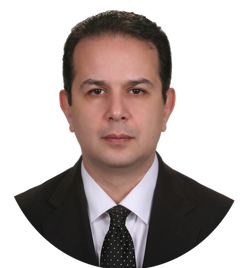The spinal canal is a space that starts from the neck to the sacrum. Inside this space is the spinal cord .The walls around this canal are made up of the bone components of the vertebral body and pedical and lamina.
تیترهای مهم این مقاله
Spinal canal stenosis
Spinal canal stenosis is a condition that can affect the neck to the lumbosacral region, and as its name implies, any condition that causes this space to be narrowed is called canal stenosis. The prevalence of stenosis in the lumbar and later in the neck is more common than in other areas.
Causes of Channel Stenosis
- Thickening of the ligaments inside the canal
- Herniation of discs to Thickening of the ligaments inside the canal
- Development of vertebral spondylosis and extension of bone osteophytes into the canal
- Vertebral fractures and canal disruption
- Osteoarthritis of the vertebral facet joints
- Congenital canal stenosis (canal diameter less than others)
- Spondylolisthesis
Symptoms of spinal canal stenosis
Pain in the lower back and legs that increases or decreases and can be accompanied by paresthesia and numbness. Pain is exacerbated by walking or standing, it can be seen as a sign of pain due to canal stenosis, bending forward and pain reduction. Symptoms of motor weakness or incontinence may also be present if the stenosis is exacerbated.
Diagnosis of spinal canal stenosis
Physical examination and evaluation of muscle reflexes and gait are important.
Imaging : Imaging tests provide the physician with complete information about the problems of vertebral column construction and the causes of spinal stenosis, including:
X-ray : To evaluate infection or bone mass and degenerative change.
Computed tomography : If the above problems are present in simple x-rays, CT scans can be used for more information.
MRI : Used to examine soft tissues including discs, ligaments, spinal cord and nerves.
Nerve and muscle function test (EMG&NCV) : It is used to determine the physiological function of the nerves and muscle.
Treatment of spinal canal stenosis
Medication : Medications are used to relieve symptoms in the acute phase as well as to restore muscle strength and relaxation, including muscle relaxants (peripheral and central), anti-inflammatory analgesics.
Non-invasive treatments for spinal canal stenosis
- Physiotherapy to treat spinal stenosis : In physiotherapy, a combination of passive techniques and exercises is used to strengthen muscular structure and corrective movements. Passive therapeutic modalities such as ice / heat, ultrasound, and electrical stimulation reduce muscle spasms. The patient learns with the help of specific exercises to increase flexibility and range of motion and to increase his or her muscle strength. Patients should not worry about switching to this treatment, even patients with pain and movement problems benefit from isometric exercises.
- Massage and manipulation : The basis of these techniques performed by hand also strengthens the muscular structure of the tissues around the vertebrae.
- High-powered laser in the treatment of spinal stenosis : The use of high-power pulse laser will increase cellular energy and repair damaged and to some extent prevent progression.
Interventional treatments
Interventional procedures are performed by a pain specialist under the guidance of X-ray (fluoroscopy) or ultrasound in the operating room.
Diagnostic and therapeutic injections
Spinal injections such as combined steroids and topical anesthetics in the epidural space are used to reduce inflammation and neutralize the chemical mediators of inflammation (caused by stenosis). In addition to this, in addition to injections, epidural radiofrequency as well as spinal nerve fibers in these areas can be used to improve and prolong changes.Other interventiona are intradiscal such as PLDD(LASER),Endoscopic discectomy … to solve canal stenosis due to disc herniation.
In what patients should surgery be performed?
- Progressive motor problem
- Incontinence
- Severe motor impairement in patients
- Failure to respond to non-surgical treatments
Thanks for reading the article Spinal Stenosis To The End. Dr. Mohammad Reza Kazemi fellowship of interventional pain management







